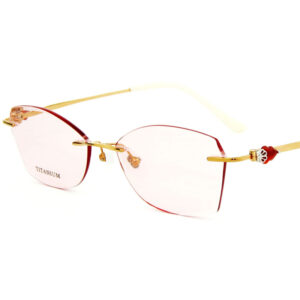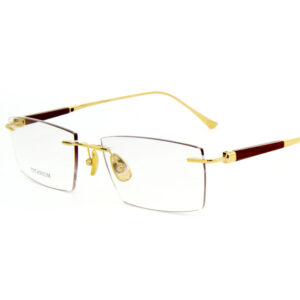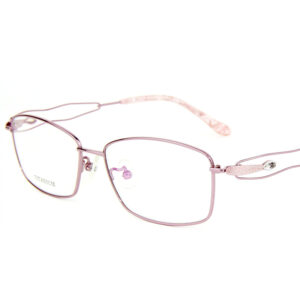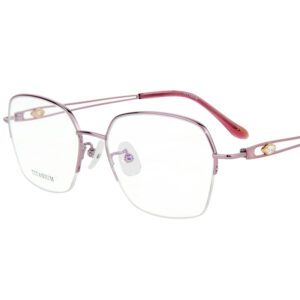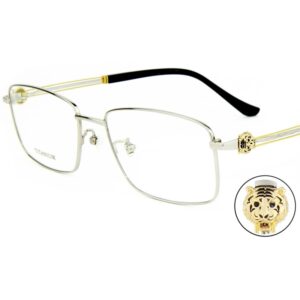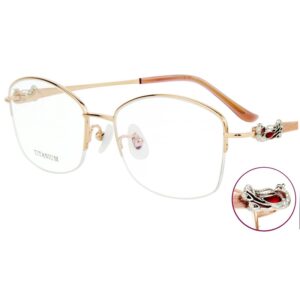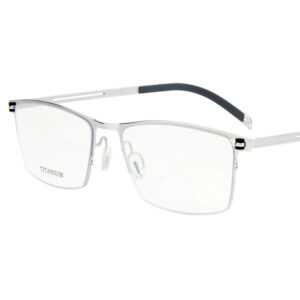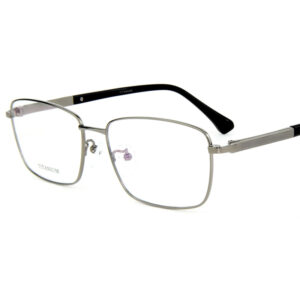Are you struggling to navigate the complex process of importing sunglasses from China to Saudi Arabia? It’s frustrating when the opportunity to grow your business is hindered by unclear steps and overwhelming paperwork. I get it—handling customs, suppliers, and logistics can feel like an impossible task. But here’s the good news: with the right guidance and strategy, importing high-quality sunglasses from China can be both straightforward and profitable. This guide is here to simplify the process and help you succeed without unnecessary headaches.
To successfully import sunglasses from China to Saudi Arabia, follow these steps: first, research and select reliable suppliers that meet your quality and certification standards. Next, negotiate clear terms, including pricing, payment, and delivery schedules. Then, arrange for shipping, ensuring compliance with Saudi customs regulations, including acquiring required documents like a commercial invoice and certificate of origin. Once your shipment is en route, track its progress and prepare for customs clearance upon arrival. Finally, verify the received goods to ensure they match your order specifications. By diligently following these steps, you can establish a smooth and reliable import process.
Importing sunglasses may seem daunting at first, but with a clear roadmap, it becomes a manageable and rewarding process. Are you ready to dive deeper into the essential details, tackle common challenges, and unlock valuable tips to ensure your import journey is successful? Let’s explore each step in more detail and set your business up for growth!
Table of Content
Chapter One: How to Find the Best Sunglass Suppliers From China?
- Step 1: Find the Best Source for Importing Eyewear from China
- Step 2: Communicating with Manufacturers
- Step 3: Visit Eyewear Manufacturers (If possible)
- Step 4: Considerations Before Importing Eyewear
- Step 5: Negotiating Prices with Eyewear Manufacturers
- Step 6: Placing Your Order with the Eyewear Manufacturer
- Step 7: Making the Deposit
- Step 8: Inspecting the Products
- Step 9: Final Payment
Chapter Two: How to Shipping Sunglass Products From China To Saudi Arabia?
Commen Knowledge: Shipping from China to Saudi Arabia | Sea, Air & Rail Freight Rates
- December 2024 Shipping Update: From China to Saudi Arabia
- Freight Shipping Cost from China to Saudi Arabia for December 2024
- Understanding Import Tax and Duties
- Navigating Legal Compliance in International Shipping
- Shipping from China to Saudi Arabia Transit Time
- Door to Door Shipping from China to Saudi Arabia
- Sea Freight from China to Saudi Arabia (December 2024)
- Air Freight from China to Saudi Arabia (December 2024)
- Express Shipping from China to Saudi Arabia
- Key Ports in China and Saudi Arabia for Shipping
- Freight Forwarders from China to Saudi Arabia
Chapter Three: How to Ship Sunglasses from China to Saudi Arabia: A Step-by-Step Guide
- Choosing the Right Shipping Method
- Finding Reliable Suppliers and Freight Forwarders
- Preparing Necessary Documents
- Arranging Product Packaging and Labeling
- Understanding and Complying with Turkey Customs and Import Regulations
- Tracking and Managing Shipment Status
- Post-Arrival Inspection and Final Delivery
- Reviewing and Optimizing the Shipping Process
Conclusion
Chapter One: How to Find the Best Sunglass Suppliers From China?
China has rapidly become a manufacturing powerhouse, producing a significant portion of the world’s consumer goods. For many companies, importing from China has proven to be a profitable global sourcing strategy. This is especially true for eyewear buyers and distributors looking to capitalize on high-quality products at competitive prices. If you’re considering importing eyewear from China, you’ve made a smart choice.
Out of the 195 countries globally, 81 countries import various products from China—this is a significant market. So, whether you are an eyewear retailer, distributor, or brand owner, importing eyewear from China can be a lucrative opportunity.
Eyewear products from China, such as sunglasses, prescription glasses, and sports goggles, are known for their cost-effectiveness, quality, and wide variety of styles. They protect eyes from various elements like:
- Excessive sunlight
- UV radiation
- Dust and debris
- Impact during sports
- Environmental hazards
- And more.
As you can see, the effort you put into importing eyewear from China is well worth it. However, this process is not without its challenges, particularly for newcomers. Importing can be time-consuming, complex, and costly if not handled correctly.
Longer shipping times, regulatory fees, rising or fluctuating distribution costs, and unforeseen delays can all erode expected profits.
Nevertheless, by following the right guide, you can successfully import eyewear from China and benefit from it. That’s where we come in. We support you every step of the way. Below is our step-by-step guide on how to import eyewear from China.
Let’s get started.
Step 1: Find the Best Source for Importing Eyewear from China
1. Using Google to Find Manufacturers
The first place most people turn to for finding answers is Google. Similarly, Google will provide a list of the most relevant results for your search.
Google has recently updated its page-ranking algorithms, which helps users distinguish between reliable websites and malicious ones.
You must narrow down the list of manufacturers to those that best suit your needs from the results you find. Afterward, you’ll contact them to determine which manufacturer you want to work with.
A major drawback of using Google to find manufacturers is that you might not find a single manufacturer that produces all the different types of eyewear you need. This could force you to source products from multiple manufacturers, which can be both expensive and time-consuming.
2. Using Alibaba to Find Manufacturers
Alibaba is one of the largest e-commerce platforms in China and globally. Thanks to its popularity and massive user base, you can quickly find various eyewear manufacturers offering a wide range of products.
However, as an open marketplace, Alibaba can also be a breeding ground for scammers. Additionally, Alibaba’s ranking system can be manipulated by companies that pay for higher rankings but may not offer quality products.
Therefore, be extra cautious when using Alibaba to find manufacturers.
3. Attending Trade Shows to Find Manufacturers
International trade shows and exhibitions are excellent opportunities for buyers and manufacturers to establish connections and secure reliable partnerships. Attending these events allows you to see and purchase samples of the products you’re interested in.
This helps you avoid the disappointment of importing products you’ve never seen before. Exhibitions also offer the potential to build a strong business network, as you can engage in face-to-face interactions with sellers and buyers.
Unfortunately, trade shows are not held frequently, but if you are willing to travel to other countries to attend these events, it can be worth it. You’ll gain valuable knowledge to take informed steps in the future.
If attending in person is not possible, make sure to leverage these opportunities when they appear in your local area.
Step 2: Communicating with Manufacturers
Avoid These Mistakes When Contacting Manufacturers
Manufacturers receive numerous messages and emails daily from potential clients. To avoid being overlooked, keep your emails short and to the point. Lengthy emails may not get the attention you desire. Instead, follow up with detailed information after receiving a response.
Requesting too little may lead manufacturers not to take you seriously. If unsure, consider calling the company to clarify your needs.
Step 3: Visit Eyewear Manufacturers
If you want to secure high-quality eyewear, there’s no substitute for an on-site visit. Visiting the manufacturer allows you to meet the team, understand the production process, and inspect the facilities.
1. Visit the Product Showroom
When you visit a manufacturer, you’ll have the opportunity to tour their showroom, where they showcase their various eyewear products in an attractive manner. This visit will allow you to assess the quality, design, and variety of products available.
2. Visit the Production Line
By touring the production line, you can observe the entire manufacturing process, from raw material handling to the final assembly. This insight is invaluable for evaluating the manufacturer’s capabilities and quality control measures.
3. Benefits of On-Site Visits
Visiting the manufacturing site can significantly benefit your business relationship. It shows the manufacturer that you are serious about purchasing their products, which can lead to better pricing and service.
Building a strong relationship with the manufacturer can result in better communication, negotiation, and long-term cooperation. You’ll also gain knowledge about the materials and techniques used, expanding your expertise in the eyewear industry.
Step 4: Considerations Before Importing Eyewear
Before purchasing and importing eyewear, there are several crucial factors you need to consider to ensure the products meet your requirements and comply with your market’s standards:
1. Materials: High-quality eyewear products typically use materials like acetate, TR90, and titanium. Acetate is popular for its durability and flexibility, while TR90 is known for its lightweight and impact resistance. Titanium is valued for its strength, corrosion resistance, and hypoallergenic properties. Ensure that the eyewear materials meet the quality and safety standards of your target market.
2. Size: Eyewear size can vary depending on the style and target demographic. A good supplier should offer customizable sizing options to cater to different face shapes and sizes. This includes variations in frame width, bridge width, and temple length. Custom sizing ensures that the eyewear fits comfortably for the end-user.
3. Structure/Construction: The construction of eyewear is critical to its durability and comfort. High-quality eyewear is often constructed using multi-layer lamination for acetate frames or injection molding for plastic frames. The hinges and screws should also be of high quality, ensuring longevity and ease of use.
4. Color: Eyewear is available in various colors and finishes, such as matte, glossy, or metallic. Popular choices include classic colors like black, tortoiseshell, and clear frames. Custom color options can also be offered to align with current fashion trends or specific branding requirements.
5. Weight: The weight of eyewear can significantly affect comfort, especially for prolonged wear. Lightweight materials like TR90 and titanium are often preferred for their comfort, making them ideal for prescription glasses and sports eyewear.
6. Accessories:
- Lens Cleaning Cloths: Essential for maintaining lens clarity without scratching.
- Protective Cases: Helps to protect eyewear from damage during storage or transport.
- Nose Pads: Silicone or rubber nose pads can be customized for comfort and durability.
- Hinges and Screws: High-quality components are necessary for durability and ease of maintenance.
- Coatings: Anti-reflective, anti-scratch, and UV protective coatings are common and can enhance the functionality and lifespan of the eyewear.
When importing eyewear, these factors will help ensure that the products meet both your quality expectations and the needs of your customers. Make sure to communicate these requirements clearly with your manufacturer to avoid any discrepancies during production.
Step 5: Negotiating Prices with Eyewear Manufacturers
Negotiating prices is a crucial step in the process of importing eyewear. The goal is to create a win-win situation for both you and the manufacturer.
Here are some strategies to ensure successful negotiations:
- Be Prepared with Detailed Negotiation Data: Before entering negotiations, gather all the relevant data, including market prices, production costs, and your desired profit margins. When manufacturers see that you are well-prepared and serious about purchasing, they will be more inclined to offer competitive prices to secure your business.
2.Request Pricing Based on Quantity Tiers: As with most products, purchasing eyewear in bulk often reduces the price per unit. Ask the manufacturer for a breakdown of prices based on different order quantities. This allows you to evaluate how much you can save with larger orders and decide on the best purchase quantity for your budget and inventory needs.
3.Quality vs. Price: Keep in mind that higher quality often comes at a higher price. While it’s tempting to push for the lowest possible cost, ensure that the quality of the eyewear meets your standards. The goal is to find the best balance between cost and quality.
4.Understand the Manufacturer’s Costs: Gaining insight into the manufacturer’s costs, including labor, materials, and overhead, can help you assess whether their pricing is reasonable. This knowledge also provides leverage during negotiations, as you can discuss any price discrepancies with a better understanding of their cost structure.
5.Build a Good Relationship: Establishing yourself as a reliable customer will make negotiations smoother. If you’re seen as a long-term partner rather than a one-time buyer, manufacturers may be more willing to offer better terms and prices.
6.Avoid Endless Requests for Samples: Constantly requesting samples without committing to an order can strain your relationship with the manufacturer. Be transparent in your communications and avoid creating the impression that you’re just shopping around without serious intent.
7.Don’t Overdo Haggling: While negotiating for the best price is important, excessively haggling over every cent can be counterproductive. Both you and the manufacturer are in business to maximize profits, so aim for a fair agreement that benefits both parties.
8.Consider Hiring a Representative: If visiting the manufacturer in person isn’t feasible, consider hiring a representative in China to assist with negotiations. This person can provide local insights, handle communications, and ensure that your interests are well-represented.
If hiring a representative is not an option, phone calls and email exchanges can also be effective, as long as they are clear and professional.
Step 6: Placing Your Order with the Eyewear Manufacturer
Once negotiations are successful, it’s time to place your order.
Sample Orders vs. Bulk Orders
Sample Orders: A sample order is a small initial order of one or more products that allows you to evaluate the quality and suitability before committing to a larger purchase. This step is especially useful if you haven’t yet visited the manufacturer in person. Sample orders carry lower risk and can save you from significant losses if the product doesn’t meet your expectations.
When discussing sample orders with the manufacturer, your email should include:
A clear statement that you are requesting a sample order.
The specific products you wish to test.
Any customizations you want for the samples. Be detailed and precise.
The quantity of each item you wish to order.
Your shipping address for sample delivery.
Bulk Orders: If you have visited the manufacturer and are confident in their products, placing a bulk order may be the best choice. Bulk orders are cost-effective and demonstrate your commitment to a long-term partnership, potentially leading to better terms and future negotiations.
With these steps, you can effectively negotiate prices and place orders, ensuring that you get the best value for your eyewear imports.
Step 7: Making the Deposit
After placing your order with the eyewear manufacturer, the next step is payment. In most cases, you will need to pay a deposit, typically around 30% of the total order amount, before the manufacturer begins production.
The manufacturer will provide you with their bank details for the transfer. If you’ve conducted an on-site visit, this is an excellent opportunity to negotiate and establish a clear payment schedule that suits both parties.
Once the initial deposit is paid, the manufacturing process for your eyewear products will commence.
Step 8: Inspecting the Products
Inspecting the products is a crucial step to ensure that the eyewear meets your standards and specifications. You should dedicate significant attention to this phase to avoid any potential issues with quality.
Inspect the eyewear for any defects such as lens scratches, misaligned frames, or loose hinges. If you can’t be physically present for the inspection, request that the manufacturer send detailed photos and videos of the products. This visual confirmation can help you verify that everything is in order before proceeding further.
A reputable manufacturer will have a compensation strategy in place for handling any defects or issues that arise after delivery.
Step 9: Final Payment
Once the inspection is complete and you are satisfied with the quality, it’s time to make the final payment. This usually covers the remaining 70% of the total order amount.
In some cases, after successful negotiations, you might agree to pay 50% before delivery and the remaining 20% after the products have been delivered. Once the final payment is made, the delivery process will begin, and your eyewear products will be on their way to you.
Chapter Two: How to Shipping Sunglass from China to Saudi Arabia?
Shipping sunglasses from China to Saudi Arabia requires more than just basic knowledge—it demands real-world expertise. As a trusted eyewear factory with years of hands-on experience, we at Eyewearglobo have managed countless international shipments. From handling packaging to ensuring compliance with customs regulations, we’ve encountered and overcome nearly every challenge in the process. This deep understanding allows us to guide you through every step, making it easier for you to focus on growing your business. Whether you’re a seasoned importer or just starting out, our practical insights will help you navigate shipping with confidence and efficiency.
December 2024 Shipping Update: From China to Saudi Arabia


Costs: Shipping costs between China and Saudi Arabia in December 2024 show varying rates. For sea freight, the cost for a 20-foot container to Dammam is approximately $3,200, while to Jeddah, it is around $3,250. For a 40-foot container, the cost to Dammam is approximately $4,450 and to Jeddah, it is around $4,480. Air freight costs from China to Dammam are around $4.78 per kg for shipments over 1000 kg.

Delivery Times: Delivery times vary based on the mode of transportation. Sea freight from China to Saudi Arabia takes approximately 20-24 days, while air freight takes 4-6 days. December may see some delays due to increased holiday season demand.
Customs: Proper documentation is crucial to avoid delays at customs in Saudi Arabia. Ensure all paperwork is accurate and complete, especially during the busy holiday period when customs activity is high.
Global Events Impacting Saudi Arabia: Geopolitical issues or disruptions in major ports like those in China or the Red Sea could impact shipping routes, leading to delays and increased costs for shipments to Saudi Arabia. Seasonal congestion and rising demand in December may also contribute to higher costs.
Outlook for December 2024: Shipping rates are expected to remain competitive, with slight adjustments possible due to increased seasonal demand. Early booking and strategic planning are still recommended to secure optimal rates and avoid potential delays, especially during the holiday season.
Summary for Saudi Shippers: To ensure smooth logistics operations from China to Saudi Arabia, stay updated on current shipping rates and potential delays. Efficient planning, accurate documentation, and flexibility in logistics are key to navigating potential disruptions during the holiday season.
Freight Shipping Cost from China to Saudi Arabia for December 2024
Overview of Costs by Shipping Mode
Understanding the cost dynamics of different shipping methods from China to Saudi Arabia is key to optimizing your logistics budget. Here are typical cost ranges for each shipping mode:
| Shipping Mode | Cost Range | Best For |
|---|---|---|
| LCL (Less than Container Load) | Approximately $100-$200 per cubic meter | Smaller shipments that do not require a full container |
| FCL – 20-foot container (Dammam) | $3,200 | Larger shipments that can fill a 20-foot container |
| FCL – 20-foot container (Jeddah) | $3,250 | Larger shipments that can fill a 20-foot container |
| FCL – 40-foot container (Dammam) | $4,450 | Larger shipments that can fill a 40-foot container |
| FCL – 40-foot container (Jeddah) | $4,480 | Larger shipments that can fill a 40-foot container |
| Express Shipping | Around $5-$8 per kilogram | Urgent shipments requiring fast delivery times |
| Air Freight | $4.78 per kilogram | Faster than sea freight but more cost-effective than express shipping for medium to large shipments |
These prices can fluctuate based on factors like fuel surcharges, seasonal demand, and changes in trade regulations. It’s crucial to remain updated with current rates and consider these variables when planning shipments.
Estimating Shipping Costs and Effective Budgeting
To effectively estimate and manage shipping costs, consider the following strategies:
- Utilize Online Cost Calculators: Tools provided by shipping companies or third-party logistics providers can offer real-time cost estimates.
- Consult with Freight Forwarders: Experienced forwarders can provide detailed insights into not only cost but also the best shipping methods based on cargo size, weight, and urgency.
- Plan for Additional Costs: Always account for possible additional expenses such as customs duties, insurance, and fuel surcharges which can significantly affect the total shipping cost.
Implementing these practices will help businesses in making informed decisions, optimizing their shipping expenses, and ensuring efficient and timely delivery of goods from China to Saudi Arabia.
Understanding Import Tax and Duties
Impact of Import Taxes on Overall Shipping Costs
Import taxes and duties significantly increase the cost of shipping goods from China to Saudi Arabia. These charges are primarily composed of Value-Added Tax (VAT), which is 15% in Saudi Arabia, and customs duties, which vary depending on the type and origin of the goods. For instance, electronics imported from China may face a customs duty rate of 5-20%, based on their classification under the Harmonized System (HS) codes. These taxes are assessed based on the CIF value (Cost, Insurance, and Freight) of the goods, meaning all transport and insurance costs to the port of entry are included in the tax base.
| Product Type | HS Code | Customs Duty | Additional Taxes |
|---|---|---|---|
| Electronics | 85 | 5-20% | 15% VAT |
| Machinery | 84 | 5-15% | 15% VAT |
| Textiles | 61-63 | 12% | 15% VAT |
| Toys | 95 | 10-20% | 15% VAT |
| Furniture | 94 | 15% | 15% VAT |
Navigating Legal Compliance in International Shipping
Ensuring legal compliance when importing goods from China to Saudi Arabia involves critical steps such as accurate classification of goods, precise declaration of their value, and thorough understanding of import regulations. Non-compliance can lead to severe consequences like penalties, shipment delays, and confiscation. Employing a knowledgeable customs broker and using advanced declaration software can help streamline the customs process. For instance, accurate use of HS codes reduces errors in tax calculation, thereby facilitating faster clearance and minimizing potential legal issues.
Shipping from China to Saudi Arabia Transit Time
Comparison of Transit Times Across Shipping Modes
When shipping from China to Saudi Arabia, understanding the transit times for each shipping mode is crucial for planning and efficiency. Here’s a breakdown of the typical duration for each transportation method:
| Shipping Mode | Transit Time Range |
|---|---|
| Sea Freight (LCL and FCL) | 20 to 40 days (depending on service type and route) |
| Air Freight | 3 to 7 days |
| Express Shipping | 1 to 3 days |
By comparing these options, shippers can select the most suitable shipping mode based on their timing requirements and the nature of their goods.
Factors Affecting Transit Times and Mitigation Strategies
Several factors can influence the transit times of shipments from China to Saudi Arabia. Understanding these elements and implementing effective mitigation strategies are key to ensuring timely delivery. Key factors include:
- Weather Conditions: Severe weather can delay both sea and air freight schedules.
- Port Congestion: Busy ports can slow down container processing and increase waiting times.
- Customs Delays: Inefficient customs processes can cause significant hold-ups.
- Logistics Chain Efficiency: Disruptions anywhere in the logistics chain can affect the overall transit time.
To mitigate these delays, shippers should consider the following strategies:
- Choosing the Right Shipping Mode: Align the choice of transport with the urgency and type of goods.
- Working with Reliable Freight Forwarders: These professionals can navigate challenges and streamline shipping processes.
- Understanding Customs Requirements: Being well-prepared with all required documentation can expedite the customs clearance process.
Door to Door Shipping from China to Saudi Arabia
Advantages of Door-to-Door Services
Using door-to-door shipping services significantly enhances the logistics process for businesses transporting goods from China to Saudi Arabia. These services streamline every logistics stage, from pickup at the supplier’s location in China to delivery at the recipient’s doorstep in Saudi Arabia. The key benefits include:
- Simplified Logistics: Eliminates the need for multiple intermediaries, providing a single point of contact for the entire shipping process.
- Reduced Handling of Goods: Minimizes the risk of damage and loss, as the goods are handled less frequently throughout their journey.
- Lower Overall Shipping Costs: Potential reductions in cost arise from the streamlined process, which can eliminate unnecessary steps and associated fees.
Choosing the Right Door-to-Door Service
Selecting the right door-to-door service is crucial for ensuring efficient and reliable shipping from China to Saudi Arabia. Platforms like SINO play a pivotal role in facilitating access to quality door-to-door shipping providers. When choosing a service provider, consider the following factors:
- Reliability: Evaluate the provider’s track record and customer reviews to ensure they can consistently meet delivery timelines and service expectations.
- Cost: Compare pricing among different providers to find the most cost-effective option without compromising on service quality.
- Service Coverage: Ensure the provider can handle shipments to your specific locations in Saudi Arabia and has the capabilities to manage all necessary logistics and customs procedures.
- Expertise in Handling Customs and Regulatory Requirements: The provider should have in-depth knowledge and experience in navigating the complexities of customs clearance and compliance with both Chinese and Saudi Arabian regulations.
Sea Freight from China to Saudi Arabia (December 2024)
Benefits of LCL and FCL Shipping
Sea freight is an efficient way to handle large volumes of goods between China and Saudi Arabia, with options like Less than Container Load (LCL) and Full Container Load (FCL) catering to different shipment sizes and budget constraints:
| Shipping Mode | Description | Cost Range (December 2024) |
|---|---|---|
| LCL | Shipments share container space, ideal for smaller loads | $100-$200 per cubic meter |
| FCL – 20-foot | Exclusive container for one shipper, enhances security | $3,200 to $3,250 per container |
| FCL – 40-foot | Larger exclusive container, reduces potential damage | $4,450 to $4,480 per container |
Selecting a Sea Freight Forwarder and Top Shipping Routes
Choosing a competent sea freight forwarder is crucial for optimizing logistics from China to Saudi Arabia. Essential factors include:
- Cost and Transit Times: Forwarders should offer competitive rates and efficient transit times. For example, standard sea freight from Shanghai to Jeddah typically takes about 20 to 30 days.
- Expertise and Reliability: A forwarder’s ability to handle customs and documentation smoothly can prevent delays and additional costs.
- Network Strength: A forwarder with extensive connections may provide more route options, which can influence both cost and speed. Major routes usually involve transit through major Chinese ports like Shanghai, Ningbo, and Guangzhou, leading to Saudi ports such as Jeddah and Dammam.
Air Freight from China to Saudi Arabia (December 2024)
| Aspect | Detail (December 2024) |
|---|---|
| Transit Time | 3 to 5 days |
| Best Suited For | High-value goods, perishable products |
| Cost per Kg | $4.78 per kg for shipments over 1000 kg |
| Pros | Speed and reliability |
| Cons | Higher costs, greater environmental impact |
Advantages and Considerations of Air Freight
Air freight offers speed and reliability for shipping from China to Saudi Arabia, with typical transit times ranging from 3 to 5 days. It is particularly effective for:
- High-value goods: Ideal for electronics, fashion items, and pharmaceuticals.
- Perishable products: Ensures freshness and quality upon arrival.
However, it comes with higher costs, typically about $4 to $6 per kilogram, making it more expensive than sea freight. This cost might not be justifiable for heavier or less time-sensitive shipments. Additionally, the environmental impact of air freight is considerably higher, which might affect the decision for environmentally conscious businesses.
Choosing the Right Air Freight Forwarder
Selecting a competent air freight forwarder involves evaluating several critical factors to ensure effective and efficient service:
- Network Reach: Essential for accessing comprehensive flight routes and schedules, directly impacting delivery times.
- Customs Expertise: Forwarders must efficiently manage customs clearances to prevent delays.
- Cost Efficiency: Competitive pricing is crucial, with some forwarders able to offer lower rates based on their volume of business and negotiations with air carriers.
Evaluating potential forwarders should include checking their track record, client testimonials, and their ability to offer transparent cost structures. This approach ensures that the chosen forwarder aligns with both logistical needs and budget constraints.
Express Shipping from China to Saudi Arabia
Benefits and Use Cases for Express Shipping
Express shipping offers unparalleled speed and reliability for transporting goods from China to Saudi Arabia. This mode of shipment is especially beneficial in several key scenarios:
- Time-sensitive shipments: When delivery times are critical and delays could result in significant costs.
- Last-minute orders: Ideal for fulfilling orders that have a tight deadline.
- High-value products: Ensures that expensive items are transported quickly and securely.
Understanding Costs and Transit Times, Including DDP Options
Analyzing the costs and transit times for express shipping is essential for budget planning and operational efficiency:
- Transit Times: Express shipping from China to Saudi Arabia typically ranges from 1 to 3 days, depending on the service provider and specific logistics.
- Cost Factors: Rates can vary but generally start around $5 to $8 per kilogram. These costs are influenced by the weight of the package, the speed of delivery, and additional services such as insurance and handling.
- Delivered Duty Paid (DDP): This shipping option is increasingly popular as it includes all taxes, duties, and customs fees in the final shipping cost. DDP simplifies the process for the buyer, ensuring that there are no additional charges upon arrival and contributing to smoother and faster customs clearance.
Key Ports in China and Saudi Arabia for Shipping
Major Chinese Ports for Exports to Saudi Arabia
The efficiency and cost-effectiveness of shipping from China to Saudi Arabia heavily depend on the choice of the departure port. Some of the major ports in China that play pivotal roles in exports to Saudi Arabia include:
- Shanghai: Known as the world’s busiest container port, Shanghai’s advanced facilities and vast network make it a top choice for international shipping.
- Shenzhen: Located in southern China, Shenzhen is crucial for shipments heading towards the Middle East due to its proximity to Hong Kong and excellent logistics capabilities.
- Guangzhou: This port is vital for exporters in the industrial south and offers comprehensive services that facilitate global trade.
Major Saudi Arabian Ports for Imports from China
When goods arrive from China, the choice of entry port in Saudi Arabia can significantly affect both shipping time and costs. The major ports in Saudi Arabia include:
- Jeddah: Serving as the gateway to the holy cities, Jeddah is the largest seaport on the Red Sea and is equipped with facilities to handle a vast range of goods.
- Dammam: Located on the Arabian Gulf, Dammam is essential for facilitating trade within the Gulf Cooperation Council (GCC) countries, offering sophisticated logistics and storage solutions.
- King Abdullah Port: Known for its high-tech equipment and efficiency, King Abdullah Port is one of the fastest-growing ports in the world, specializing in container handling and logistics services.
Freight Forwarders from China to Saudi Arabia
Role of Freight Forwarders in the Shipping Process
Freight forwarders are crucial as intermediaries in the international shipping industry, especially in facilitating shipments from China to Saudi Arabia. They handle a variety of roles including:
- Documentation Handling: Managing all necessary paperwork required for international shipping, ensuring that all legal and regulatory requirements are met.
- Customs Clearance: Navigating the complexities of customs protocols to prevent delays and additional charges.
- Cargo Tracking: Offering real-time updates on the whereabouts of shipments, increasing transparency and enhancing security.
Chapter Three: How to Ship from China to Saudi Arabia: A Step-by-Step Guide
Preparing Your Shipment: Documentation, Packaging, and Labeling
Before your goods embark on their journey from China to Nigeria, it’s crucial to nail down the preparation phase. This involves more than just packing your items; it requires meticulous attention to documentation, packaging, and labeling. Properly preparing your shipment can prevent common pitfalls and ensure your goods clear customs smoothly.
- Documentation: Essential documents include the commercial invoice, packing list, and bill of lading. These documents should accurately describe the goods, their value, and the parties involved in the transaction.
- Packaging: Your goods must be packaged securely to withstand the rigors of international transit. Use quality materials and consider the nature of your goods when choosing packaging methods.
- Labeling: Labels should comply with both Chinese and Nigerian regulations, clearly displaying information such as contents, weight, and any handling instructions.
Navigating Customs and Tracking Your Shipment
The journey from China to Nigeria involves navigating the complexities of customs clearance while keeping a close eye on your shipment’s progress. Understanding the customs process and leveraging available tracking tools are key to a successful international shipment.
- Customs Clearance: Familiarize yourself with the customs regulations in both China and Nigeria. Ensure all duties and taxes are accurately assessed and paid to avoid hold-ups. Utilizing the correct Harmonized System (HS) codes for your goods is critical for proper duty assessment.
- Tracking Your Shipment: Utilize tracking tools provided by your freight forwarder, shipping line, or express courier service to monitor your shipment’s journey. Real-time tracking allows you to anticipate and manage any potential delays.
Freight Forwarders from China to Nigeria
Role of Freight Forwarders in the Shipping Process
Freight forwarders play a pivotal role in the realm of international shipping, acting as the crucial link between shippers and transportation services. When shipping goods from China to Nigeria, these entities take on the complex logistics, ensuring that your cargo navigates through the maze of global trade regulations and logistics channels efficiently.
They offer a suite of services that are indispensable for smooth international trade:
- Documentation Handling: Managing and preparing shipping and customs documents.
- Customs Clearance: Navigating the complexities of customs regulations to ensure goods are cleared quickly.
- Cargo Tracking: Offering visibility into the shipment’s journey, providing peace of mind and enabling better planning.
Selecting the Right Freight Forwarder for Your Needs
Choosing the right freight forwarder is crucial for ensuring that your goods are transported from China to Nigeria without a hitch. Here are key factors to consider:
- Experience with the China-Nigeria Trade Route: Knowledge of this specific corridor can significantly impact the efficiency of your shipment.
- Network and Partnerships: A robust network means better options and potentially lower costs for your shipments.
- Service Offerings: Comprehensive services from warehousing to delivery can simplify logistics for businesses.
- Customer Service Reputation: Good customer service means better communication and problem-solving capabilities.
Chapter Three: How to Ship Sunglasses from China to Nigeria: A Step-by-Step Guide
Shipping sunglasses from China to Saudi Arabia presents a lucrative opportunity for businesses looking to tap into the growing eyewear market in the region. However, the process can seem overwhelming if you’re unfamiliar with sourcing reliable suppliers, choosing the right shipping method, and navigating Saudi Arabia’s import regulations. Whether you’re shipping in bulk or smaller quantities, having a clear roadmap ensures smooth operations and protects your investment.
To ship sunglasses from China to Saudi Arabia, start by selecting a trustworthy supplier and negotiating shipping terms. Decide between air freight for speed or sea freight for cost efficiency, depending on your order size and urgency. Engage a knowledgeable freight forwarder to handle customs clearance and ensure compliance with Saudi import requirements, including obtaining necessary certifications like SASO (Saudi Standards, Metrology, and Quality Organization). Use secure payment options such as Letters of Credit or escrow services to safeguard your transaction. By following these steps, you can achieve a streamlined and hassle-free shipping process.
With the basics covered, let’s dive deeper into the specifics of each step. From supplier selection to customs compliance, understanding the finer details is essential to making your shipping process efficient and profitable.
1. Choosing the Right Shipping Method
Choosing the right shipping method impacts both costs and delivery times. When shipping sunglasses from China to Saudi Arabia, it’s essential to evaluate your options carefully to balance cost-efficiency with operational reliability.
Air Freight
Air freight is fast and efficient, making it a prime choice for high-value or urgent goods like sunglasses. Though it is more expensive, its speed is a significant advantage, with transit times typically 3–7 days between major Chinese airports (e.g., Shanghai Pudong or Guangzhou Baiyun) and Saudi airports (e.g., Riyadh King Khalid or Jeddah King Abdulaziz). Customs clearance might extend this by an additional day or two. This method is ideal for smaller, time-sensitive shipments that require expedited delivery.
Sea Freight
For bulk orders that emphasize cost savings, sea freight is the most common method. Although it is slower, with transit times of 4–6 weeks, it is significantly more economical than air freight. Goods can be shipped from Chinese ports such as Ningbo, Shenzhen, or Shanghai to major Saudi ports like Jeddah Islamic Port or King Abdulaziz Port in Dammam. This method is perfect for large-volume shipments with flexible delivery timelines. Additional expenses like port fees and customs charges should be factored into the overall cost.
Express Shipping
For small, high-value shipments or urgent sample orders, providers like DHL, FedEx, and UPS offer express services with delivery times of 2–5 days. These include tracking and simplified customs procedures, ensuring reliability and speed. Although it is the most expensive option, express shipping is ideal for critical shipments or samples requiring immediate attention.
How to Choose the Best Method
Packaging and Labeling: Always ensure your sunglasses are packaged securely and labeled according to international shipping standards to prevent delays or damage.
For high-value, time-sensitive shipments: Air freight or express shipping is optimal.
For large-volume, cost-sensitive orders: Sea freight offers the best value.
2. Finding Reliable Suppliers and Freight Forwarders
Choosing the right suppliers and freight forwarders is essential to minimize risks, maintain product quality, and ensure efficient delivery. Here are some tips tailored for shipping sunglasses from China to Saudi Arabia:
Finding Suppliers
- Use B2B Platforms: Platforms like Alibaba and Global Sources are excellent for finding reputable sunglasses suppliers in China.
- Attend Trade Shows: Participating in eyewear trade fairs such as the China International Optics Fair (CIOF) can help you connect with high-quality manufacturers.
- Verify Supplier Credentials: Ensure the supplier has export experience, relevant certifications (e.g., UV protection for sunglasses), and robust manufacturing capabilities.
- Inspect Production Facilities: If possible, conduct an on-site inspection or request video tours to assess the supplier’s equipment and quality control processes.
Choosing a Freight Forwarder
A reliable freight forwarder familiar with the China-Saudi Arabia route can simplify logistics and ensure smooth delivery.
- Check Experience: Look for forwarders with strong knowledge of Saudi import regulations, especially SASO standards.
- Verify Credentials: Use referrals, freight platforms, or industry associations to evaluate their expertise and reputation.
- Focus on Communication: Choose a forwarder with a responsive support team to keep you informed throughout the shipping process.
Confirming Services
Before finalizing your freight forwarder, compare service offerings:
- Customs Support: Ensure they handle Saudi customs documentation, including SASO certification.
- Insurance: Opt for insured shipping to protect against damage or loss during transit.
- Tracking: Real-time tracking services provide visibility into your shipment’s status.
Tips for Choosing a Freight Forwarder
- Review Quotes and Timelines: Analyze detailed cost estimates and delivery schedules.
- Verify Customization Options: If you have specific requirements (e.g., temperature-sensitive packaging), confirm they can accommodate these needs.
- Negotiate Contract Terms: Ensure the agreement covers potential delays, insurance coverage, and handling of disputes.
By partnering with reliable suppliers and forwarders, you can significantly reduce risks and ensure a smooth shipping experience for your sunglasses.
3. Preparing Necessary Documents
International shipping from China to Saudi Arabia requires meticulous preparation of various documents to ensure smooth customs clearance and avoid costly delays or penalties. These documents serve as proof of compliance with trade regulations and provide necessary information to customs authorities. Below is a detailed breakdown of the essential documents needed for shipping sunglasses to Saudi Arabia:
1. Commercial Invoice
The commercial invoice is one of the most critical documents in international shipping. It provides a detailed account of the transaction, including:
- Product Details: Model name, description, and specifications of the sunglasses.
- Quantity: Number of units in the shipment.
- Pricing Information: Unit price, total value, and currency used in the transaction.
- Trade Terms: Specify Incoterms like FOB (Free on Board) or CIF (Cost, Insurance, and Freight).
Customs authorities in Saudi Arabia use this document to calculate import duties and taxes. Ensure that the commercial invoice is accurate, comprehensive, and aligned with other shipping documents. Errors or omissions can result in delays or fines.
2. Packing List
The packing list provides detailed information about the shipment’s contents, helping customs officials inspect and verify the goods. It should include:
- Package Details: Number of packages, dimensions, and weight.
- Contents: A clear breakdown of the items in each package.
- Labeling Details: Information matching the external labels on the cartons or pallets.
Ensure the packing list matches the physical shipment and other documents like the commercial invoice. Discrepancies can lead to customs clearance issues.
3. Bill of Lading (BOL)
The Bill of Lading is a crucial legal document issued by the carrier that serves as:
- Proof of Ownership: Establishes the right to claim the shipment.
- Transport Contract: Acts as a formal agreement between the shipper and the carrier.
- Shipping Details: Includes the type of transport (sea or air), departure and destination ports, and the consignee’s details.
Ensure the BOL is properly filled out and signed by all relevant parties. For sea freight, use an Ocean Bill of Lading; for air freight, an Air Waybill is required.
4. Certificate of Origin
The Certificate of Origin certifies where the sunglasses were manufactured. This document is crucial for customs clearance and determining if the shipment qualifies for tariff reductions under trade agreements between China and Saudi Arabia.
- Who Issues It: Typically provided by the supplier or an authorized chamber of commerce in China.
- Why It’s Needed: Verifies compliance with Saudi trade regulations and helps determine applicable tariffs.
5. SASO Certificate
The SASO Certificate (Saudi Standards, Metrology, and Quality Organization) ensures that the products comply with Saudi quality and safety standards.
- Who Issues It: Typically provided by a SASO-approved certification body.
- Why It’s Needed: Essential for customs clearance in Saudi Arabia.
6. Additional Supporting Documents
Depending on the specifics of your shipment, you might also need the following:
- Insurance Certificate: Proof of cargo insurance to protect against damage or loss during transit.
- Proforma Invoice: A preliminary invoice for customs that provides an estimated value for duties calculation.
- Health and Safety Certifications: If your sunglasses include unique features like UV protection, ensure compliance with international safety standards.
Tips for Document Preparation
- Ensure Consistency: All documents must have matching details. Discrepancies between the commercial invoice, packing list, and BOL can result in delays or fines.
- Double-Check Accuracy: Verify every detail, including HS codes, values, and quantities, to avoid errors that could complicate customs clearance.
- Keep Copies: Maintain both digital and physical copies of all documents for easy access during transit or inspections.
- Use Expert Assistance: Work with your freight forwarder or customs broker to ensure all paperwork complies with Saudi import regulations.
Why Proper Documentation Matters
Accurate and thorough documentation not only speeds up the customs clearance process but also minimizes the risk of penalties or shipment delays. By ensuring every document is complete and consistent, you protect your supply chain and maintain customer satisfaction. Preparing these documents well in advance and reviewing them carefully with your logistics partner will set the foundation for a smooth and successful shipping process to Saudi Arabia.logistics partner will set the foundation for a smooth and successful shipping process to Nigeria.
4. Arranging Product Packaging and Labeling
Proper packaging and labeling are essential to protect sunglasses during transit, especially for long-distance shipping to Saudi Arabia. Here are some practical tips to ensure your shipment arrives safely and complies with local regulations:
Packaging
Sunglasses should be securely packaged to prevent damage during handling and transport. Consider the following:
- Protective Materials: Use bubble wrap, foam padding, or similar materials to cushion individual sunglasses.
- Sturdy Cartons: Place the cushioned items into durable outer cartons. For added safety, mark the cartons as “Fragile”.
- Bulk Shipping: For larger orders, use standardized shipping containers to minimize the risk of loss or damage. Ensure the cartons are properly sealed and stacked to withstand rough handling.
Labeling
To comply with Saudi Arabian labeling regulations, ensure all labels are clear, accurate, and informative. Each product should include the following details:
- Product Details: Brand name, model, and specifications.
- Manufacturer Information: Name and address of the manufacturer.
- Country of Origin: Clearly state “Made in China”.
- Importer Details: Saudi regulations often require labeling to include the importer’s or distributor’s name, address, and contact details.
Accurate labeling ensures smooth customs clearance and prepares the shipment for immediate sale upon arrival.
Packaging and Labeling Tips
- Meet Saudi Standards: Ensure that all packaging and labeling comply with Saudi quality and safety regulations, including SASO standards.
- Protect Against Transit Damage: Use tamper-proof seals and water-resistant materials for additional protection.
- Pre-Shipment Verification: Double-check packaging and labeling before shipping to avoid delays or rejections at customs.
- Bulk Shipping Efficiency: If shipping in bulk, use pallets and shrink-wrap to stabilize goods during transport.
Proper preparation of packaging and labeling not only ensures your sunglasses reach Saudi Arabia safely but also protects your brand reputation and minimizes potential delays.
5. Understanding and Complying with Saudi Arabian Customs and Import Regulations
Navigating Saudi Arabia’s customs and import regulations is crucial for ensuring your shipment of sunglasses clears customs smoothly, without delays or unnecessary penalties. Compliance doesn’t just safeguard your shipment—it helps you avoid unexpected costs and keeps your business operations running smoothly.
Duties and Taxes
Saudi Arabia imposes customs duties and VAT (Value Added Tax) on imported goods. For sunglasses, the applicable rates include:
- Customs Duty: Typically 5%-10% of the CIF value (Cost, Insurance, and Freight).
- VAT: A flat rate of 15% applied to the total value, including customs duties.
To avoid surprises, calculate the total landed cost (product price + duties + VAT + shipping fees) in advance. This gives you a clear understanding of your expenses and helps you budget effectively.
Compliance Requirements
All imported goods must meet Saudi standards for quality and safety, which are enforced by the Saudi Standards, Metrology, and Quality Organization (SASO). For sunglasses, compliance may include:
- UV Protection Certification: Sunglasses must meet international safety standards for UV protection.
- Accurate Labeling: This is critical and must include:
- Product details: Brand, model, and specifications.
- Manufacturer’s name and address.
- Country of origin: Clearly state “Made in China”.
- Importer’s or distributor’s details: Include name, address, and contact information.
Failure to comply with these requirements can lead to shipment rejection, penalties, or delays.
Customs Documentation
Customs clearance in Saudi Arabia hinges on submitting accurate and complete documents. Missing or inconsistent paperwork is one of the most common reasons for delays. Key documents include:
- Commercial Invoice: Specifies transaction details, including product descriptions and trade terms (e.g., FOB or CIF).
- Packing List: Details shipment contents, including quantity, weight, and packaging information.
- Bill of Lading (BOL): Confirms transport details and serves as proof of shipment.
- Certificate of Origin: Certifies the product’s origin (China) and may qualify it for tariff reductions.
- SASO Certificate: Demonstrates compliance with Saudi safety and quality standards.
Why Compliance Matters
By understanding and adhering to Saudi Arabian customs and import regulations, you streamline your shipping process, minimize risks, and ensure your sunglasses reach their destination without unnecessary complications. Compliance not only protects your shipment but also builds trust with your customers, ensuring your products meet the high standards of the Saudi market.
How have you been managing import logistics so far? If you’ve experienced any specific challenges in navigating customs, I’d be happy to dive deeper into solutions!ss, minimize risks, and ensure compliance with local laws.
6. Tracking and Managing Shipment Status
Efficient tracking of your shipment is essential to identify and resolve potential transit issues early, ensuring timely delivery of sunglasses to Saudi Arabia.
Shipment Tracking
- Utilize real-time online tracking tools provided by freight forwarders or carriers to monitor the shipment’s location and status.
- Tracking is particularly beneficial for air and express shipments, offering timely updates to reduce the risk of lost or delayed goods.
Delay Management
- If delays occur, contact your freight forwarder immediately to determine the cause.
- Consider alternative solutions, such as expediting subsequent shipments or adjusting your logistics timeline, to avoid disruptions to your sales.
Tracking Suggestions
- Maintain regular communication with your freight forwarder.
- Monitor shipment status frequently to ensure the sunglasses arrive on schedule and are ready for distribution.
7. Post-Arrival Inspection and Final Delivery
Upon arrival at a Saudi port, inspections and final delivery arrangements are critical to maintaining product quality and customer satisfaction.
Inspecting Goods
- Verify that the sunglasses match the order specifications and are undamaged.
- Inspect lenses, frames, and packaging to ensure they align with quality expectations before dispatching to distribution points.
Arranging Final Delivery
- For destinations far from the port, collaborate with a local logistics provider to ensure safe delivery to your warehouse or retail location.
- For bulk shipments, engage insured transport services to mitigate potential losses or damage during transit.
Inspection Tips
- Document the shipment’s condition upon arrival.
- If issues arise, contact your supplier or freight forwarder promptly to resolve them.
8. Reviewing and Optimizing the Shipping Process
Each shipment offers an opportunity to refine and improve your shipping processes for future orders.
Assess Costs and Efficiency
- Evaluate transportation costs, transit times, and the performance of your logistics partners.
- Identify successful practices and address inefficiencies to streamline future shipments.
Document Lessons Learned
- Keep records of any customs delays, compliance issues, or damages experienced during shipping.
- Use this feedback to proactively avoid similar problems in subsequent shipments.
Optimization Tips
- Regularly review your logistics partners’ service quality.
- Update your supply chain strategies to enhance efficiency, reduce costs, and ensure customer satisfaction.
By implementing these tracking, inspection, and optimization practices, you can strengthen your supply chain and maintain smooth operations when shipping sunglasses to Saudi Arabia.
Conclusion
Shipping sunglasses from China to Saudi Arabia involves multiple steps, from selecting the right shipping method to complying with customs regulations and optimizing the process. With proper planning and adherence to guidelines, businesses can ensure smooth and successful shipping operations.ents and complying with Turkey customs regulations. By carefully selecting reliable suppliers and freight forwarders, preparing accurate documents, and following Turkey import standards, you can ensure a smooth and efficient shipping process.
FAQ: Shipping Sunglasses from China to Saudi Arabia
Shipping sunglasses from China to Saudi Arabia involves several considerations, from selecting the best shipping method to understanding customs regulations. Here’s a detailed FAQ to guide you through the process.
1. What are the most common shipping methods for sunglasses?
Shipping sunglasses from China to Saudi Arabia typically involves two main options:
- Air Freight:
- Best for urgent or small shipments.
- Delivery time: 3–5 days.
- Cost: Approximately $4.78 per kilogram for bulk shipments.
- Advantages: Speed and reliability.
- Disadvantages: Higher cost compared to sea freight.
- Sea Freight:
- Ideal for large-volume shipments.
- Delivery time: 20–40 days, depending on routes and ports.
- Cost: $3,200–$3,250 for a 20-foot container.
- Advantages: Cost-effective for bulk goods.
- Disadvantages: Longer transit times.
Here’s a comparison table:
| Shipping Method | Delivery Time | Cost | Ideal For | Drawbacks |
|---|---|---|---|---|
| Air Freight | 3–5 days | $4.78/kg (bulk rate) | Small or urgent orders | High cost |
| Sea Freight | 20–40 days | $3,200–$3,250 (20ft) | Large-volume shipments | Long transit times |
Choose the method based on your budget, urgency, and shipment size.
2. What are the key import regulations for sunglasses in Saudi Arabia?
Importing sunglasses into Saudi Arabia requires compliance with several regulations:
- SASO Standards: Sunglasses must meet safety and quality standards set by the Saudi Standards, Metrology, and Quality Organization (SASO).
- Labeling Requirements: Labels must include Arabic translations for usage instructions and warnings.
- Product Certification: Importers must obtain a SASO Certificate of Conformity to prove the product complies with Saudi regulations.
Documentation Requirements:
- Certificate of Origin: Proof of product manufacturing country.
- Commercial Invoice: Detailed list of items and their value.
- Packing List: Information about shipment contents.
Failure to meet these regulations can lead to penalties or delays. Partnering with experienced suppliers who are familiar with Saudi standards is essential.
3. How much do shipping costs vary between air and sea freight?
Shipping costs are influenced by the weight, volume, and urgency of the shipment. Below is a detailed breakdown:
| Shipping Factor | Air Freight | Sea Freight |
|---|---|---|
| Cost | $4.78 per kg (bulk) | $3,200–$3,250 per 20ft |
| Transit Time | 3–5 days | 20–40 days |
| Weight/Volume Efficiency | Expensive for heavy loads | Cost-efficient for bulk |
| Customs Clearance Speed | Faster | Slower |
Sea freight is significantly cheaper for larger volumes, while air freight is ideal for urgent or lightweight shipments.
4. How long does customs clearance take in Saudi Arabia?
Customs clearance usually takes 1 to 3 business days, provided all documentation is complete and accurate.
To speed up the process:
- Submit documents like the SASO Certificate of Conformity, commercial invoice, and packing list on time.
- Ensure products comply with all labeling and certification standards.
Delays can occur due to missing or incorrect paperwork, non-compliance with regulations, or misdeclared goods. Collaborating with a customs broker or freight forwarder can help you avoid these issues and streamline the process.
5. What are the main documents needed for importing sunglasses?
Here’s a list of essential documents required for importing sunglasses into Saudi Arabia:
| Document Name | Purpose |
|---|---|
| Certificate of Origin | Verifies the manufacturing country of the goods. |
| Commercial Invoice | Details the product type, value, and quantity. |
| Packing List | Specifies the shipment contents and dimensions. |
| SASO Certificate | Proves compliance with Saudi quality standards. |
| Bill of Lading/Air Waybill | Acts as a shipping contract between the supplier and carrier. |
Having these documents ready helps avoid delays and ensures smooth customs clearance.
6. What are the applicable taxes and duties?
Import taxes and duties in Saudi Arabia include:
- Customs Duty: A flat rate of 5% on the value of the goods.
- VAT (Value Added Tax): 15% of the total cost, including product value, customs duty, and shipping fees.
For example:
| Cost Item | Amount (USD) |
|---|---|
| Product Value | $10,000 |
| Customs Duty (5%) | $500 |
| Shipping Cost | $2,000 |
| Total VAT (15%) | $1,875 |
The total cost after taxes would be $14,375. Ensure you factor these costs into your budget.
7. Can sunglasses be shipped via express courier services?
Yes, express couriers like DHL, FedEx, and UPS are excellent options for smaller or urgent shipments.
Advantages of Express Shipping:
- Speed: Delivery within 3–5 days.
- Convenience: Door-to-door service.
- Customs Assistance: Many couriers handle customs clearance.
Disadvantages:
- Higher costs compared to traditional freight.
- Limited capacity for large-volume shipments.
For example, shipping 10 kg of sunglasses via DHL may cost around $300–$400, depending on the destination. Use express shipping when time is critical.
8. What are common challenges when shipping sunglasses to Saudi Arabia?
| Challenge | Solution |
|---|---|
| Incorrect documentation | Double-check all documents for accuracy. |
| Non-compliance with SASO | Work with certified suppliers who understand SASO standards. |
| Higher freight costs | Optimize packaging and choose cost-effective methods. |
| Delays in customs clearance | Partner with a reliable customs broker. |
Planning ahead and maintaining clear communication with suppliers and freight forwarders can help overcome these obstacles.
9. How can I ensure the quality of sunglasses shipped from China?
To ensure product quality:
- Request Samples: Evaluate samples before confirming bulk orders.
- Inspect Suppliers: Verify supplier certifications and reviews.
- Third-Party Quality Checks: Hire an inspection company to evaluate products before shipment.
Investing in quality assurance minimizes the risk of receiving defective or non-compliant products, saving you time and money in the long run.
10. Do I need a license to import sunglasses into Saudi Arabia?
Yes, you must obtain a General Trading License or equivalent commercial registration to import goods into Saudi Arabia.
This license ensures you are authorized to engage in international trade and comply with Saudi Arabian regulations. If you’re new to the process, consult with a freight forwarder or legal advisor to avoid errors during registration.
Shipping sunglasses from China to Saudi Arabia requires attention to detail, from choosing the right shipping method to meeting regulatory requirements. By preparing thoroughly and working with reliable partners, you can achieve a smooth and efficient import process.
Conclusion
Shipping sunglasses from China to Saudi Arabia is a multi-step process that requires attention to detail, proper planning, and compliance with local regulations. By following best practices, partnering with reliable logistics providers, and staying informed, you can streamline your operations and grow your business effectively.



